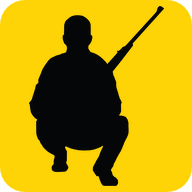Dirty Smith Harry
Member
- Joined
- Aug 20, 2025
- Messages
- 6
- Reaction score
- 1
Looking for the deepest penetrating bullet that does not tumble...
I have some questions about hard cast bullets for the S&W 500 4" inch revolver, specifically in regards to deepest penetration and tumbling. Does the S&W 500 4" inch revolver have any problems stabilizing specific hard cast rounds? Is there a sweet spot in grains in weight for penetration before any tumbling occurs? For example, is the 440gr hard cast the upper limit or can you go beyond 500gr before tumbling occurs? I know there are 600gr and 700gr hard cast bullets for that round...
Have any of you noticed differences in penetration with regards to grains bullet weight on test medium or game ?
Both the 500 JRH in 460gr and 480 Ruger in 400gr can penetrate 17 water jugs.
I have some questions about hard cast bullets for the S&W 500 4" inch revolver, specifically in regards to deepest penetration and tumbling. Does the S&W 500 4" inch revolver have any problems stabilizing specific hard cast rounds? Is there a sweet spot in grains in weight for penetration before any tumbling occurs? For example, is the 440gr hard cast the upper limit or can you go beyond 500gr before tumbling occurs? I know there are 600gr and 700gr hard cast bullets for that round...
Have any of you noticed differences in penetration with regards to grains bullet weight on test medium or game ?
Both the 500 JRH in 460gr and 480 Ruger in 400gr can penetrate 17 water jugs.





